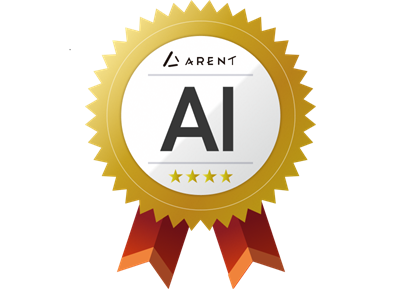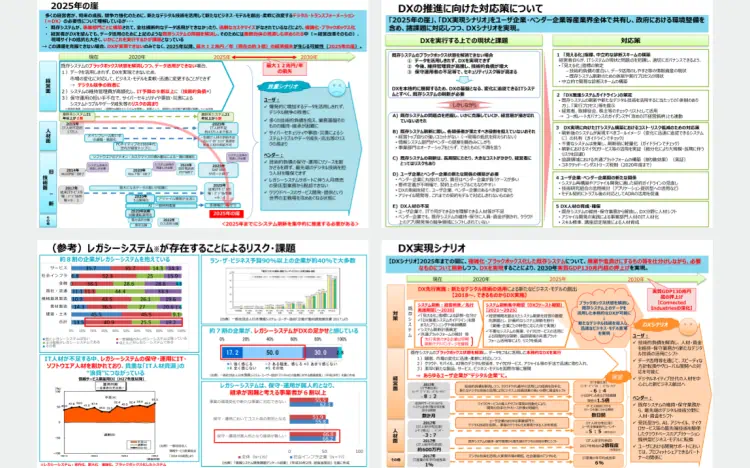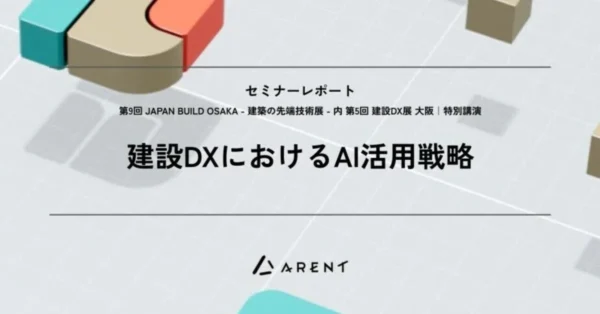System Structure
Arent’s DX Strategy: Developing systems and technologies that can be used "unconciously"
Arent promotes transforming internal systems into an application integration approach as a core strategy for successful digital transformation (DX). Rather than relying on ERP systems that easily become black boxes, we leverage commercial applications for general business tasks and develop SaaS for industry-specific operations, seamlessly connecting them through APIs. By combining applications tailored to each business process, we avoid legacy issues and black-box risks, reduce the cost of maintaining large databases, and gain the flexibility to add or remove functions as needed. This approach also frees up resources to invest in core areas, enabling the systematization of essential technologies.
Application Integration Model

Rather than relying on large, monolithic systems, Arent advocates an application integration approach—selecting the optimal SaaS for each business need and connecting them flexibly through APIs. This vendor-independent structure provides the flexibility to add or remove functions as needed, reduces maintenance costs, avoids legacy issues, and enables faster updates.
We don't need "big strategies" or "big systems"
When people think of DX, they often picture large-scale strategies or massive company-wide systems. In reality, the essence lies in steadily solving everyday challenges. Small wins at each site accumulate to drive major transformation. Arent recognizes every seeds of change and cultivates them with the most effective approach.
The application integration DX strategy endorsed by Japan’s Ministry of Economy, Trade and Industry.
In the 2018 “DX Report” published by Japan’s Ministry of Economy, Trade and Industry, legacy systems were identified as a major obstacle to DX. The report recommended shifting to a structure that flexibly integrates optimal systems at the business-unit level. Arent’s application integration DX strategy is based on this guideline and aligns with the government’s recommended direction.
Arent's idea of a "Successful DX Strategy”
Construction DX
Developing automation SaaS integrated with BIM to drive efficiency across operations.
The key to DX in the construction industry lies in achieving efficiency by introducing automation SaaS integrated with BIM as the core system. While BIM adoption is progressing, its potential remains underutilized. Since BIM is essentially a database, leveraging it as a foundation for automation can significantly boost efficiency.
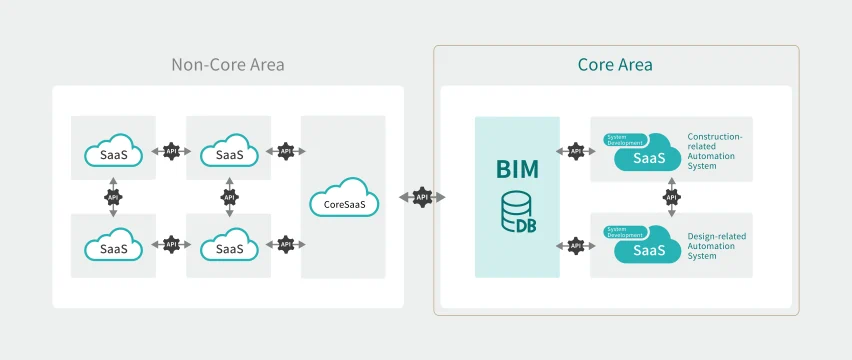
Challenges of BIM implementation
The main challenge in BIM implementation is the heavy data-entry workload. In addition to traditional CAD data, attribute data must also be entered, which is especially time- and labor-intensive during the design and construction drawing stages. However, leveraging the data accumulated in BIM can greatly improve efficiency in construction and maintenance management. By using information from RPM (Rapid Prototyping and Manufacturing), these processes can be transformed into far more effective tools. Yet, in practice, these capabilities remain underused.

BIM automation and its benefits
Automation streamlines processes from BIM data entry through construction and maintenance. By saving time and reducing errors, it ensures smoother project delivery. BIM-driven automation also makes project visualization and simulation easier, supporting smarter decision-making. For example, simulating a building’s energy efficiency enables cost savings and evaluation of environmental impact. This approach helps address labor shortages and unlock new business opportunities. As a driving force of innovation in the construction industry, automation goes far beyond mere efficiency.
What is BIM?
BIM is a database that allows computers to recognize a building as a building and is an integral part of DX in the construction industry. This document will outline the details of BIM.

Arent's idea of "Strategies to Lead a Successful Construction DX".
AI Boost Strategy
Arent's AI Boost Strategy
Arent promotes the “AI Boost Strategy,” seamlessly integrating AI into construction operations so that everyone can benefit—without the need to consciously think about using it. Through co-creation with clients and in our own products, we embed AI across all processes, from design to construction and maintenance. This approach standardizes tasks that are often dependent on individuals, enhances decision-making and work quality, and significantly improves efficiency.

Advancing the application integration model with AI implementation
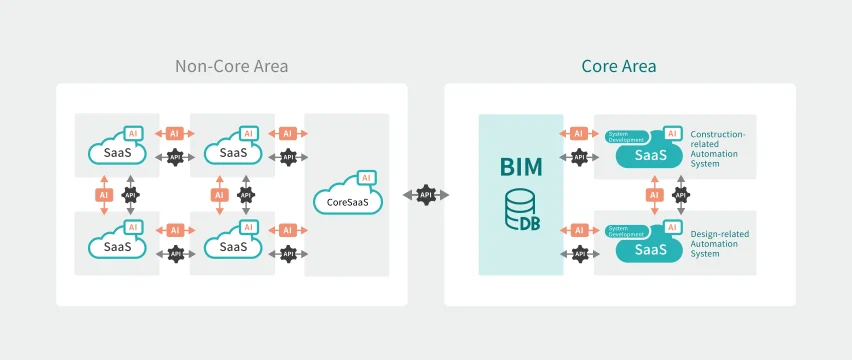
By combining the application integration model with AI, multiple SaaS can be seamlessly connected. In non-core areas, we integrate surrounding applications around core SaaS to optimize operational efficiency. In core areas, BIM serves as the foundation, linking with design and construction systems, while AI automates repetitive tasks and data processing to significantly reduce workloads. With AI embedded, efficiency and automation go beyond previous limits, accelerating transformation across operations.
What is the AI Boost Strategy?
Rather than treating AI as just a tool, our approach is to seamlessly integrate it into everyday workflows. The vision and ideas behind Arent’s 'AI Boost Strategy' are explained in detail on note (in Japanese).
